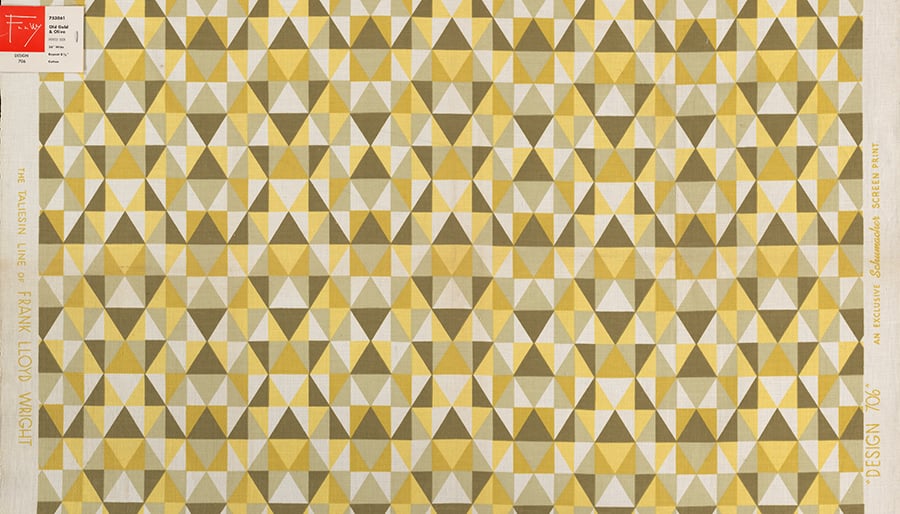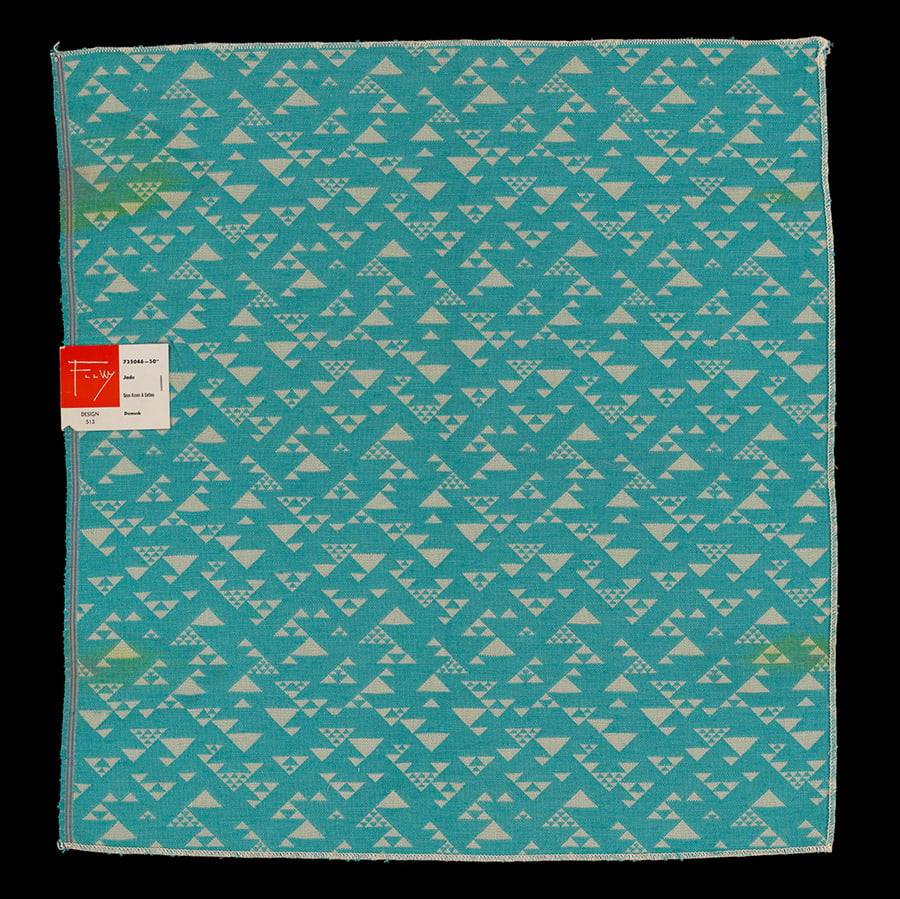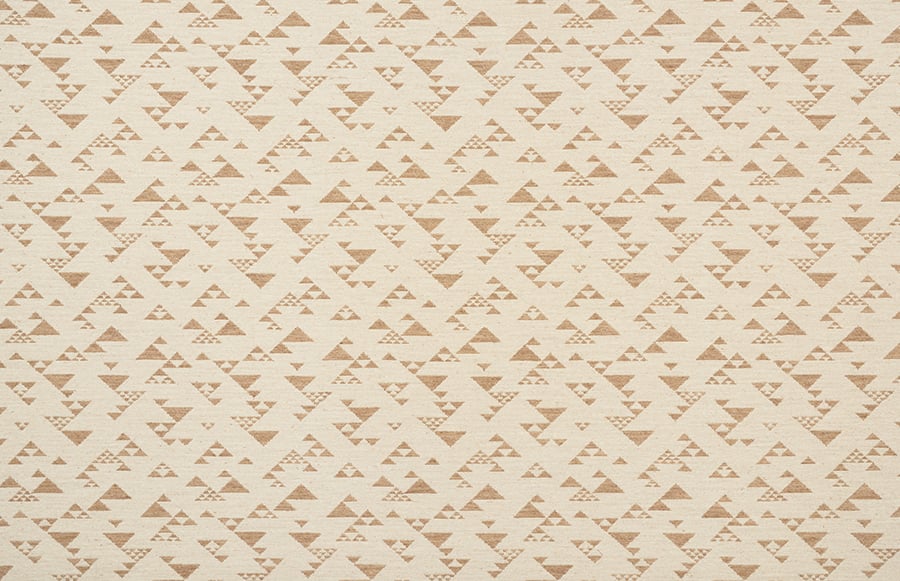
May 29, 2019
Frank Lloyd Wright–Designed Textiles Go On View at the Metropolitan Museum of Art
The textiles and wallpapers featured in Frank Lloyd Wright Textiles: The Taliesin Line, 1955–60 were based on Wright’s architectural vocabulary and inspired by specific buildings.

A new exhibition at the Metropolitan Museum of Art features printed and woven textiles and mahogany vases from the Taliesin Line, the first and only commercial line of affordable home products for the general consumer created by Frank Lloyd Wright at the end of his career.
Wright didn’t initiate this foray into household goods. Rather, at the urging of the editor of House Beautiful magazine, Elizabeth Gordon, he agreed to design a line of fabrics and wallpapers for F. Schumacher and Co., furniture for Heritage-Hendredon, paint for Martin-Senour, rugs for Karastan, and accent pieces for Minic Accessories. These designs were detailed in the November 1955 issue of the magazine, which was completely devoted to Wright and his work.
Of the five lines, only the textiles and wallpapers, furniture, and paint ultimately saw production. The textile and wallpaper designs were based on Wright’s architectural vocabulary and inspired by specific buildings, photographs of which were included in a sample book published by Schumacher.
The museum’s exhibition, Frank Lloyd Wright Textiles: The Taliesin Line, 1955–60, which is on display through April 5, 2020, features the sample book, Schumacher’s Taliesin Line of Decorative Fabrics and Wallpapers Designed by Frank Lloyd Wright (1955), and nine examples of the fabrics in question. (The sample book contains large samples of six printed and seven woven textile designs, meant for upholstery and drapery, as well as four coordinating wallpapers.)
Just 100 copies of the sample book were printed, and these were sold to authorized dealers for the then-steep price of $35. The museum has photographed all pages of the book, which can be viewed on the Met’s website.

According to Amelia Peck, curator of decorative arts in the museum’s American Wing and supervising curator of its Antonio Ratti Textile Center (where the exhibition is on display), all designs were made “under the direction and supervision” of Wright, who enlisted his apprentices and members of the Taliesin Fellowship to help create the designs. The fellows themselves were a community of apprentices and their families who lived, worked, and studied with Wright in Wisconsin and Arizona.
Peck adds that Wright was most involved with the creation of textiles with printed designs. Schumacher’s Taliesin Line fabrics were made from linen, silk, mohair, rayon, cotton, and even lurex.
While the furniture and paints did not sell well, the textiles and wallpapers were successful, and designs from the original line remained in production for over a decade. In fact, Schumacher released an updated version of the Taliesin Line in 1986, and again in 2017 in honor of the 150th anniversary of Wright’s birth. That 2017 “Applied Architecture” collection features both original Taliesin Line textile designs, most in new colorways, as well as new ones based on Wright’s original drawings, including commissions for the Imperial Hotel in Tokyo; Price House in Phoenix; and Frances W. Little, for whom Wright designed homes in Peoria, Ill., and Wayzata, Minn. (The Wayzata home was demolished in 1972, though its living room interior is on permanent display at the Met.)
In addition to the textiles, the exhibition includes two examples of Wright-designed wooden vases produced in a very limited number (and which never reached the open market), and a 1954 photograph of the architect by Yousuf Karsh.
You may also enjoy “The TWA Hotel’s Interiors Aim to Recapture Midcentury Glam.”
Would you like to comment on this article? Send your thoughts to: [email protected]

















